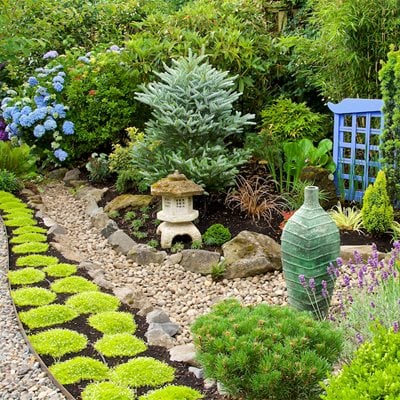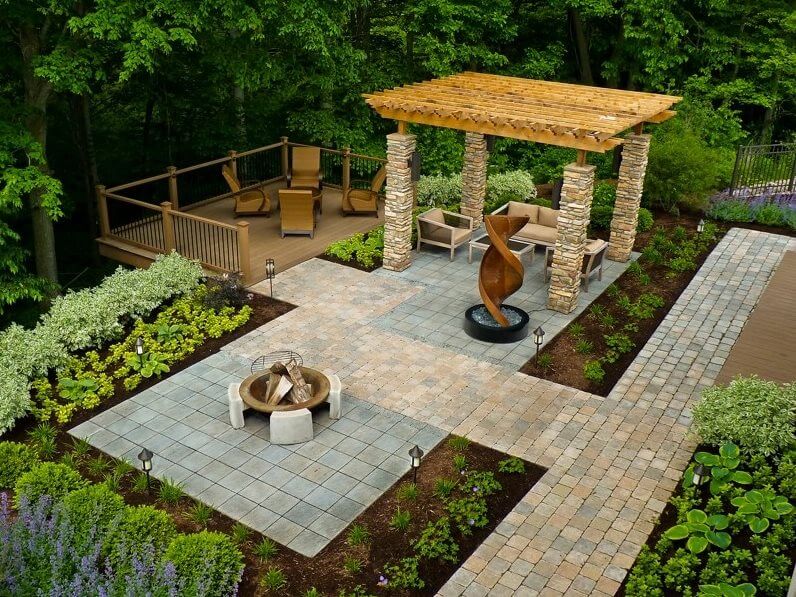The Only Guide to Landscapers
Table of ContentsSome Known Facts About Landscapers.Examine This Report about LandscapersSee This Report about LandscapersWhat Does Landscapers Do?Everything about LandscapersLandscapers Fundamentals Explained
- A garden feature where water is represented by an accumulated rock item, typically a gravel or granite. These are most typically located in modern-day and Japanese yard design.- A rock or natural flagstone patio area, path, or walkway constructed without a concrete base. The base would be compressed gravel and the joints would certainly be an accumulation or walkable ground cover.- A rock keeping or free standing wall surface developed without the usage of mortar. A highly skilled mason is required for a dry stack rock wall surface. The majority of walls in Portland are moist piled, also if they appear to be. - A below ground structure that collect water and enables it to slow percolate right into the soil around it.
Landscape style that is compatible with a sites' atmosphere in both appearance and sustainability without unfavorable influences to the setting. Interrupting the landscape is a line of separation that develops visual interest in the yard by dividing one sector from another section. This can be aesthetic or practical, maintaining one aspect (such as pea gravel) from obtaining mixed into one more (like bark dirt).
Areas can additionally have a feeling of "unit" supplied by trees, other plantings, fencings, or screens. The landscape near the access to a building.
Some Known Factual Statements About Landscapers

The component in a landscape layout or location in a landscape that is indicated to be most famous. The focal factor can be a plant, stone, statuary, gathering room, or various other landscape feature.
:max_bytes(150000):strip_icc()/look-up-look-down-photography--o7ASOHDV9E-unsplash-62ac6efd6d724c7abb7320fefe03b411.jpg)
Not known Facts About Landscapers
Rock item, either rounded or fractured, that is fairly little- typically 1" or much less. Low plants that are enabled or encouraged to spread out over a location. Can refer to any type of "hard" garden components including statuary or stones yet many generally is used to describe courses, patios, and walls.: Height distinction in between the level of water in a pond (or the degree of the pump if it rests outside the pond) and the upper electrical outlet of water which influences performance of the water pump in gph (gallons per hour). Dense bushes or trees that create a fence, screen, or limit.
Fence boards that run horizontally, typically used in modern-day or Japanese-inspired landscape designs. Proper use of fictional lines can help the landscape feel attached to the home and other aspects.
Conventional PNW landscapes are informal. A plant that spreads out more than desired, or right into habitats Get More Information where it does damages.
Get This Report on Landscapers
Smart irrigation controller testimonials and suggestions below. 2-D rendering of the recommended irrigation system. Can include head positionings and protection, pipeline sizing, GPM specs, and materials required to install this system. A watering strategy is typically unneeded for domestic homes but is typical for business projects. Certified specialist who creates landscapes, educated in engineering and style as well as in gardening.
The specialist that plans and establishes landscape jobs, generally at a residential or little industrial degree with the significant layout motivation on plantings. Landscape designers normally have much less education than Landscape Architects and are not licensed. A completed landscape design, detailing all elements for the new landscape. This typically takes the type of an illustration theoretically.
Utilizing numerous growings of the very same range to fill webpage in a location in the landscape. This can reduce maintenance and water usage in the garden.
A layer of compost or bark dirt used at the base of a plant. A plant that was existing in a geographical location prior to people began altering the landscape.
The Landscapers PDFs
Exactly how the yard or a yard element is organized in partnership to an existing or brand-new feature or to a direction. Turfs that are not trimmed yet expanded in landscapes as perennials.

Plants that provide seasonal interest and after that die back in the winter. Cold period lawn that is the most typical lawn lawn in Portland, OR and the remainder of the PNW.An open roofed check my site framework over a patio or various other landscape function.
Basalt accumulated ranging in dimension from 1/4" down to dirt. One of the most typical landscape gravel in the PNW. Area of the landscape made to handle water up until it can soak right into the ground. A chain that controls water as it travels from a roofing seamless gutter to the ground. Garden structure that produces a growing area that is consisted of and more than the surrounding quality.
Developing a garden function being composed primarily of stones with growings that enhance and can thrive in the rocky setting. Lawn sprinkler head design that revolves a stream of water throughout a location.
The Of Landscapers

Comments on “Landscapers Fundamentals Explained”